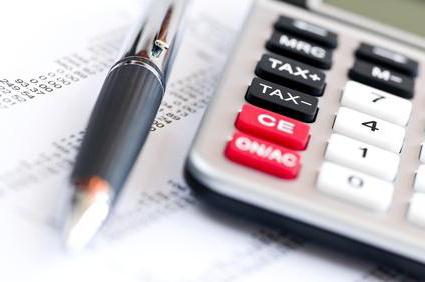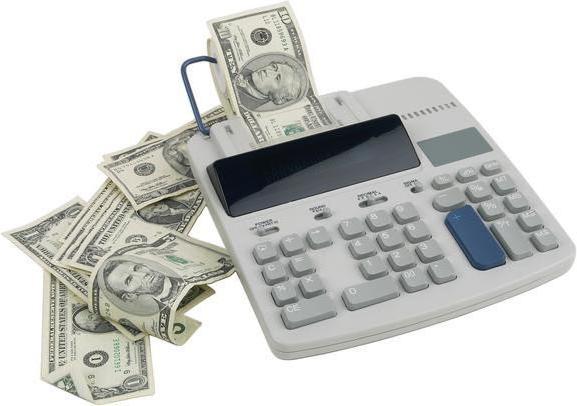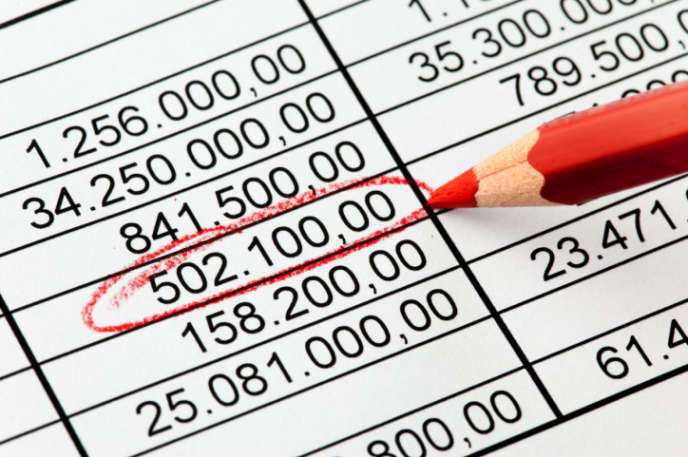The company may adopt various methods for calculating depreciation of fixed assets for their various groups. As stated in paragraph 18 of Rules 6/01, the selected method with respect to the category of homogeneous objects should be applied throughout the entire useful life of the values included in it. Let us further consider what are the main methods for calculating depreciation. 
Classification
The accounting and tax laws provide for different methods for calculating depreciation of fixed assets. In the first case, 4 is set:
- Linear depreciation method.
- In proportion to the volume of goods.
- By the sum of all the numbers of years of the useful life.
- Reduced balance.
Tax legislation provides for two ways. One of them coincides with the first from the list above. In addition to it, the nonlinear method of depreciation is also used. This method does not correspond to any of those provided in the PBU.
Features of choice
Since 2009, in its reporting policy, the company must establish which depreciation method will be used for fixed assets. However, it is not installed for each OS separately. It is selected relative to all objects of the corresponding property. In accordance with the general rule, the adopted method is fixed in the accounting policy of the company for a specific period. During the specified period, only this method is allowed. As an exception, objects appear, the list of which is given in paragraph 3, Art. 259 Tax Code. A linear depreciation method is always applied to them. According to the provisions of the article, this method applies to transmission devices, structures and buildings related to 8-10 gr. OS
Important point
In the norms of Ch. 25 Tax Code establishes the ability to use different methods of calculating depreciation - to change the method fixed for the current year. This transition is carried out according to certain rules. In particular, when changing the method fixed in the accounting policy, already operated objects are transferred to the new method. In this case, the legislation establishes certain restrictions. So, the payer has the right to change the non-linear depreciation method no more than 1 time in 5 years. Switching to another method is allowed from the beginning of the year (the next reporting period). The rules in accordance with which changes are made are established in Art. 322 Tax Code. 
Depreciation: OS accounting methods
In 2009, significant changes were made to tax legislation. Some of them have fundamentally changed the methods used for calculating depreciation amounts that were used up to that time. In accordance with accepted standards, operations are carried out in several stages:
- Distribution of fixed assets at the beginning of the reporting period. It is performed for groups that have the same depreciation rate. At the same stage, the cost of the OS is formed.
- Calculation of the average annual value of funds in the corresponding category.
- Determination of the depreciation amount. This operation involves multiplying the established norm by the average balance (average) value of the asset. In this case, correction factors are taken into account. They are designed to reflect the actual operating conditions of the facilities in the enterprise or in the workshop.
- Determination of the total amount of deductions for the coming period for all relevant funds. This task is accomplished by adding up the amounts obtained in the previous steps.
Basic depreciation methods: uniform method
It is considered one of the most common in practice. This method is focused on uniform moral and physical deterioration of the OS.In the latter case, the use of "linearity" is more legitimate. The situation with obsolescence is somewhat different. The fact is that the development of production technologies, equipment and science is uneven. In this regard, the obsolescence of the OS in most cases differs at an accelerated pace. Line charge does not provide the concentration of resources necessary for quick and timely replacement of equipment that is subject to intense obsolescence. Therefore, the company should provide for such methods of depreciation that will make it possible to re-equip production in a short time. 
Formula
The linear method provides that each year the cost of goods includes the same part of the price of the OS. The transferred share can be determined by the simplified formula (without the indicator of residual value):
Фп = На x Фп (б) / 100%, where:
- The transferred part is FP.
- Depreciation rate - On.
This method to some extent covers the operation of the transfer of value. Other methods of calculating depreciation are not so simple and clear.
Features of the uniform method
This accrual method provides:
- Even distribution of contributions to the fund.
- Stable and proportional allocation of depreciation to the cost of production.
- Simplicity and high accuracy of calculations.
The relativity of accounting for part of the transferred value is determined by the following circumstances:
- The uniform method provides that by the time the operational period ends, the liquidation value will be zero. This cost includes the selling amount of discontinued and worn-out operating systems. As a rule, it is determined by the price of scrap metal.
- The linear method assumes uniform wear of funds throughout the entire period of operation.
disadvantages
During the operational period there are equipment downtime, breakdown, incomplete workload per shift. This means that, in practice, machine wear is uneven, which leads to the same nature of the transfer of OS value to products. This method, in addition, does not take into account obsolescence of equipment. The disposal of such equipment before the completion of the standard depreciation period leads to under-depreciation. Its value is determined by the formula:
Н = (Фо + Рл) - Фл, in which:
- Under depreciation - N.
- Residual value - Fo.
- Disposal costs - Rl.
- Salvage value of OS - Fl.

Losses from the disposal of under-depreciated fixed assets affect the result of the company's business.
Alternative way
To increase the interest of firms in updating the OS, the accelerated depreciation method is used. In this case, during the first three years, increased rates are included in the calculations. They allow you to attribute to the cost of goods produced more than 2/3 of the original price of the OS. The remaining value is transferred according to stable (identical) standards for each remaining year of service within the established period (in a uniform way). Combined, these depreciation methods allow for both the moral and physical deterioration of equipment. For small enterprises, a preferential feature applies. During the first year of operation, they have the right to additionally write off up to half the balance (initial) value of the fixed assets, the service life of which is more than 3 years. For larger enterprises, conventional depreciation methods are provided.
Limitations
The method of accelerated depreciation applies only to the active part of fixed assets, the normative period of operation of which is more than three years. The legislation also requires that this method be applied exclusively to funds focused on increasing the output of progressive (new) types of raw materials, equipment and devices, VT devices, expanding the export of goods, and also when they replace obsolete and worn-out equipment.At the same time, standards are agreed with financial state bodies. The methods for using depreciation calculated in this way should be exclusively targeted. Otherwise, the additional amount received is included in the tax base, in accordance with applicable law. Accelerated depreciation is carried out based on the uniform method, when the norm for the inventory object approved in the established order is increased, but not more than twice. 
Advantages of computing
Unequal depreciation methods during the first half of the established standard operating life of the asset allow you to offset 0-75% of their value. In the case of applying the first method considered, the compensation would be no more than 50%. In the second half of the operating life of the asset, depreciation decreases. This method thus allows:
- To form the necessary savings for the reconstruction and technical re-equipment of production.
- To accelerate the renewal of the active part of the enterprise funds.
- Reduce income tax.
- To prevent physical and moral deterioration of the active part of the OS - to maintain a high technical level of equipment.
Unequal methods of depreciation, thus, contribute to the formation of a base for increasing production volume, improving the quality of manufactured products, reducing production costs.
Reduced balance
It consists in the fact that the depreciation amount is calculated every year in accordance with the residual value of fixed assets and the established norm. In other words, 100% should be divided by the useful life. This option, on the one hand, looks profitable for the enterprise, since it can ensure uniform cost-bearing. While the equipment is new, a significant part of the depreciation amount and a minimum of repair costs are written off. Subsequently, when the process of obsolescence of property begins, maintenance costs will become higher, but at the same time, deductions will decrease. However, like other depreciation methods, this method also has disadvantages. Some of them are very significant for the enterprise.
Correction factor
One of the significant drawbacks of the reduced balance method is that by the end of the useful life the cost of the asset will not be fully written off. This method involves the use of an acceleration coefficient. Many accountants consider this opportunity a way out. Indeed, the residual reduction mechanism works better when using the coefficient. However, the unwritten amount will remain in any case, although it will be less. In addition, the use of the coefficient is allowed only for small enterprises (for them it is 2) and owners of leased property (its value for them is 3). As practice shows, even with a maximum indicator, the OS will not be fully amortized. As a result, by the end of the useful life, the company will not be able to write off the entire value of the object. Leaving this part on the balance sheet is extremely unprofitable for the enterprise. Otherwise, the company will be forced to pay expired property tax. Some specialists write off the balance due to net income. However, this option cannot be called the best. Exits from situation 2:
- Write off the balance at a time in the last period of operating the OS.
- Continue depreciation with the same method until the full repayment of its value.

The remaining amount can be attributed to the cost of production, and not to the financial result. Conventional depreciation methods suggest just such a method of transferring it.
The disadvantages of the method of reduced residue
This method does not provide the desired result, since during the first year the accrued depreciation amount will be equal to the value obtained when applying the uniform option. From this it follows that the residual price of the object with the method of reduced balance will be greater.Along with this, the repayment of the value of fixed assets in a decreasing progression will mean that depreciation can never reach 100%. However, this method is the only one that allows the use of a correction factor. Annual value depreciation charges when using the method, it is determined in accordance with the residual value of the object at the beginning of the period and the norm established by the useful life and the coefficient of not more than 3.
Other options
The cumulative method acts as a kind of accelerated method. This option allows you to write off up to 80% of the OS value during the first 3 years of operation. The calculation is as follows:
A = (Tm. - m + 1) Fb / S, where:
- serial number of the period for which the calculation is carried out - m;
- the total number of years of the service period is S (S = Tsl. (T + 1) / 2);
- depreciation - A.
There is also a production method. He suggests that depreciation charges depend more on the volume of manufactured products. Calculation is carried out every month based on the actual size of the issue. This option is convenient when the decommissioning of OS intended for the manufacture of a specific volume of goods is carried out.
Practical use
As mentioned above, the company independently chooses certain depreciation methods. Examples from practice show, however, that this or that method is not always beneficial for the company, although it seemed at first glance the most suitable.
Consider a hypothetical situation. The enterprise has equipment on its balance sheet. It belongs to the third depreciation group. The useful life is 40 months, and the initial cost is 400 thousand rubles. The company acquired the OS in 2007, put into operation in February of the specified year. Depreciation was charged in a uniform manner. Since January 1, 2009, the company switched to the nonlinear method. Suppose that at that date the company no longer had OSs in the third category. For 2007-2008 accruals were carried out in the amount of 10 thousand rubles. (400 thousand / 40 months). Jan 1 In 2009, the residual value was 180,000 rubles. By this value, equipment is included in the total balance for its depreciation group. After changing the method, the amounts for the OS are as follows:
- 180,000 x 5.6% = 10,080 rubles. - for January.
- (180,000 - 10,080) x 5.6% = 9516 - for February.
- (180,000 - 10,080 - 9,516) x 5.6% = 8983 rubles. - for March, etc.
From the calculation it can be seen that from the second month, the depreciation amount has become less than that used before the change in the method. Under these conditions, we find the residual value of the OS when it is sold. To do this, use the formula given in paragraph 1 of Art. 257 Tax Code. The residual value is 180 thousand rubles. (S), the number of full months during which the equipment was in its category - n = 3. In this way:
180,000 x (1 - 0.01 x 5.6) 3 = 151,421.4 rubles.
When calculating the residual value in a direct way, you get the same value:
180 000 - 10 880 - 9516 - 8983 = 151 421 rubles. 
additional information
In the event that upon disposal of the depreciable asset, the total balance for the relevant group is reduced to zero, this category is subject to liquidation. The legislation provides for a special rule if this indicator becomes less than 20 thousand rubles. In the month following the one in which this value was reached, the payer may exclude this group. This is allowed if the total balance has not increased as a result of the commissioning of new facilities. The remaining value after the liquidation of the depreciation group is included in non-operating expenses of the current period. This provision is established in paragraph 12, Art. 259.2 Tax Code. The procedure in accordance with which decommissioning of fixed assets at the end of the useful life is carried out is recorded in paragraph 13 of this article.
Conclusion
As you can see, the company has several tools with which it can carry out depreciation. Choosing this or that method, the company should take into account a number of factors. First of all, it is necessary to take into account the features of the production cycle, the ultimate goal of the company, the possibility of its resources. You should evaluate all the advantages and disadvantages of existing methods, the feasibility of introducing them into accounting activities.After conducting an analysis of economic activity, the selected option for calculating depreciation amounts should be recorded in the documentation. The company must use the selected method for the entire period for which it is determined. If necessary, the company can change the adopted system. The procedure for making adjustments is established in the Tax Code. Before doing this, an assessment of the appropriateness of such a transition should be carried out, since practice shows that far from always changing a previously adopted system brings the desired benefit to the enterprise.



